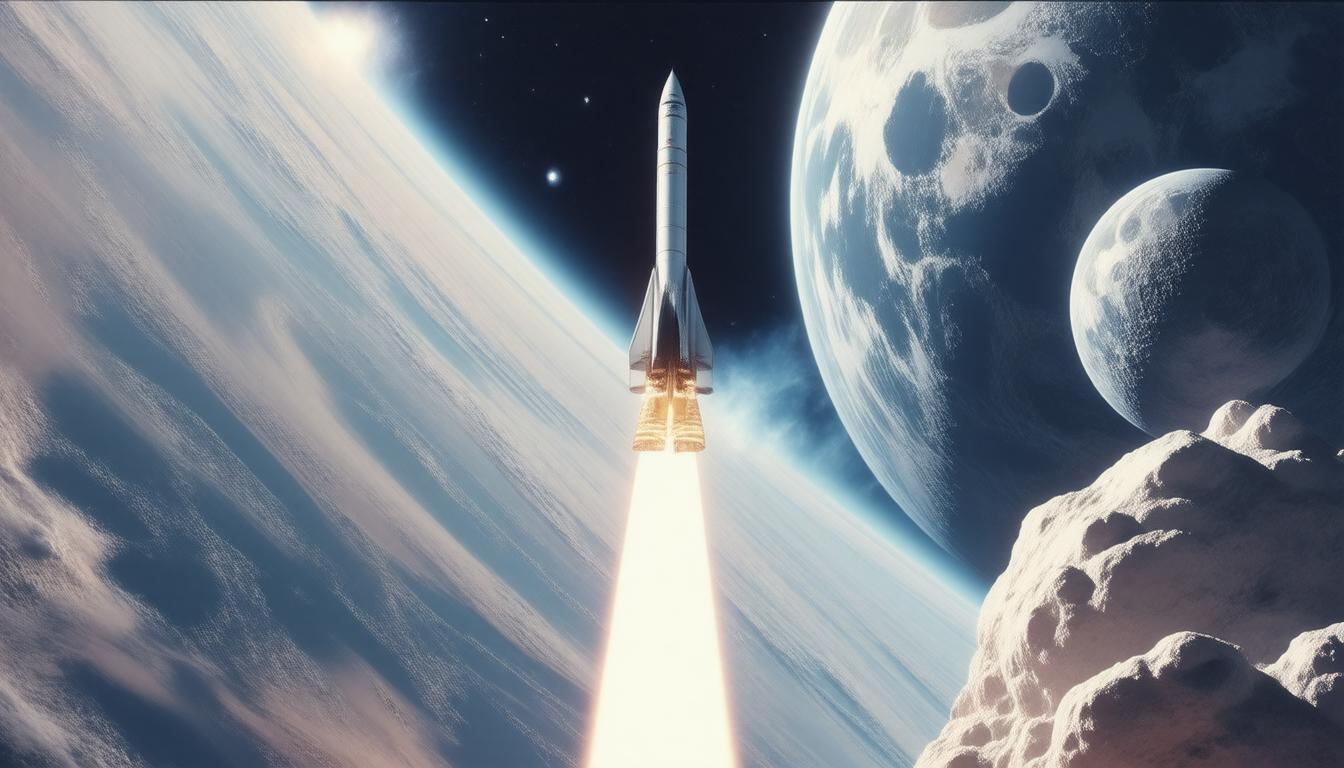**Title: **
As humanity prepares for a new era of lunar exploration, NASA’s Artemis II mission stands as a beacon of progress and ambition. This historic endeavor marks the first crewed lunar mission in over half a century, aiming to not only journey around the Moon but to lay the groundwork for a sustainable human presence and scientific discovery on its surface.
Setting the Stage for Exploration
Artemis II is a pivotal step in the Artemis program, following the uncrewed Artemis I mission that validated the capabilities of NASA’s Space Launch System (SLS) rocket and Orion spacecraft. The Artemis II crew, consisting of four astronauts, will embark on a ten-day mission to demonstrate a variety of deep space exploration capabilities, showcasing the readiness of the Orion spacecraft to support human life in the challenging environment beyond Earth.
The crew will undergo vital training in operations that are essential for the success of future lunar missions, emphasizing their role in a long-term return to the Moon.
Launching into the Unknown
The journey begins at NASA’s Kennedy Space Center in Florida, where the crew suits up and undertakes final checks before their historic launch. Stacked on the mobile launcher, the towering 322-foot SLS rocket, combined with the Orion spacecraft, is prepared for a test flight that culminates in a dramatic liftoff.
As the countdown reaches zero, the rocket unleashes an astonishing 8.8 million pounds of thrust, powered primarily by its two massive solid rocket boosters. Just moments after launch, the crew aboard Orion experiences the thrill of escaping Earth’s gravity, marking the beginning of their voyage.
Journey to the Moon
Once Orion reaches a high Earth orbit, the crew initiates a comprehensive systems check while still within familiar proximity to Earth. This 24-hour period allows the astronauts to acclimatize to their spacecraft, examining key operations that will be critical during the mission ahead.
The mission includes a proximity operations demonstration—a manual handling test where astronauts use onboard cameras to pilot the spacecraft for docking scenarios. Such skills will be essential for future missions involving rendezvous and docking with other lunar vehicles.
After preparing diligently, the crew performs a translunar injection burn, setting their course toward the Moon on a trajectory that measures over 230,000 miles from Earth. During the journey, astronauts will not only continue to test the spacecraft’s systems but also experience the incredible view of the lunar far side—an area unseen by humans for over 50 years.
The Return Journey
As the crew approaches Earth after their lunar expedition, Orion’s crew module separates from its service module, positioned to navigate through the Earth’s atmosphere at speeds nearing 25,000 miles per hour. This intense descent sees the crew experience four times the force of gravity, an exhilarating and harrowing transition back to their home planet.
Upon re-entry, Orion’s advanced heat shield protects against temperatures soaring up to 5,000 degrees Fahrenheit. Through a carefully orchestrated parachute sequence, the crew’s descent is slowed to ensure a safe splashdown in the Pacific Ocean. The recovery teams, comprising Navy personnel, NASA, and Air Force members, swiftly assist the astronauts as they emerge from this remarkable journey.
Conclusion: A Historic Mission Reinvented
After a decade-long reconfiguration of our approach to lunar exploration, Artemis II exemplifies humanity’s enduring spirit of discovery and adventure. The mission signifies not just the re-establishment of a presence on the Moon but the possibility of future exploration beyond, where the capabilities developed will pave the way for missions to Mars and other celestial destinations.
As the astronauts complete their notably historic journey from Earth to the Moon and back, they leave behind invaluable data and experiences that will guide future endeavors. NASA’s Artemis program reaffirms its commitment to returning humans to the Moon, not just for exploration but for the advancement of science and understanding in the broader cosmos. The legacy of this mission will undoubtedly resonate through generations to come, inspiring future explorers to reach for the stars.
Ready to get in the game and start making money on Pump.fun? DogWif Tools is the #1 memecoin sniper tool for becoming a Pump.fun millionaire. Get DogWif Tools today and become a memecoin dev!








